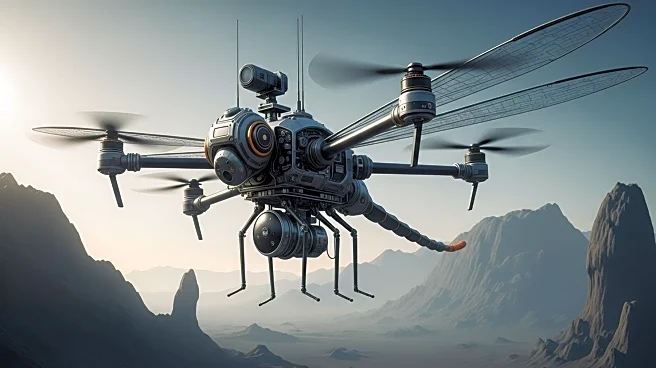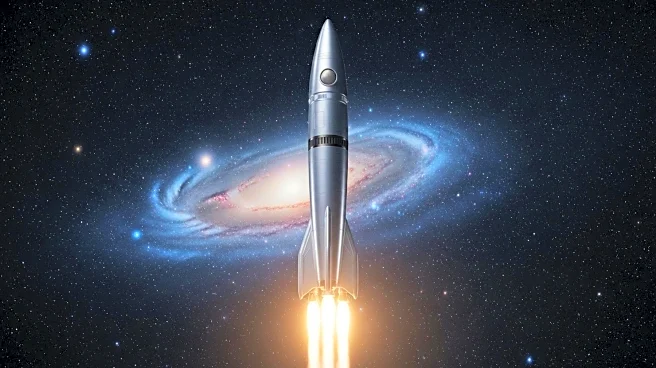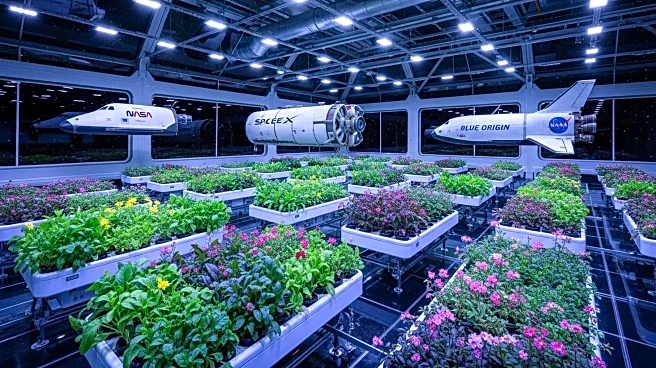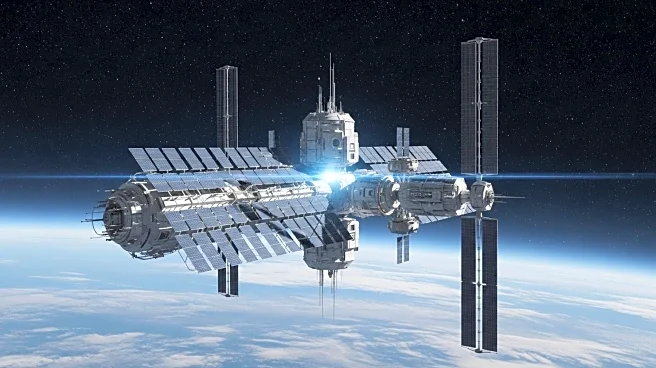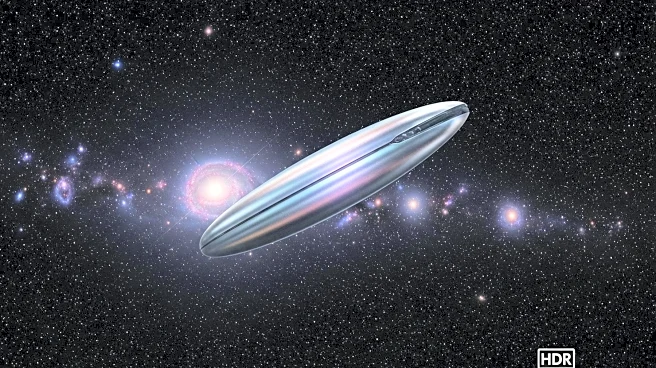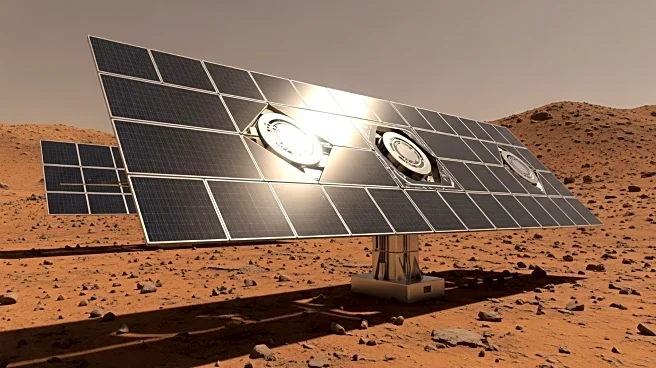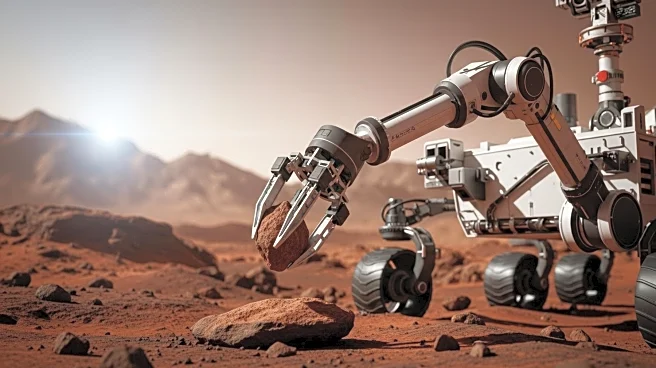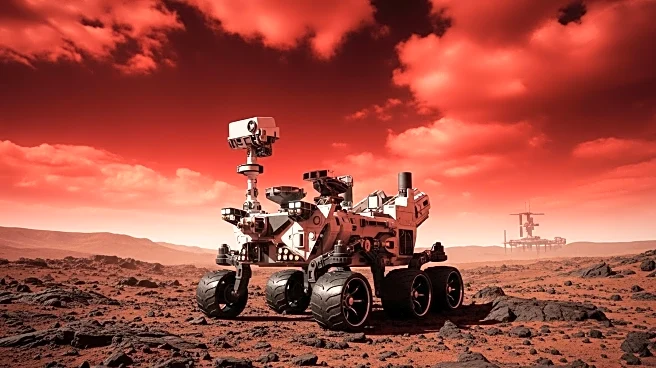What is the story about?
What's Happening?
NASA is preparing to launch the Dragonfly mission, a pioneering rotorcraft designed to explore Saturn's moon Titan. This mission aims to investigate Titan's habitability by flying to various locations on the moon, which is facilitated by Titan's dense atmosphere and low gravity. Dragonfly will be equipped with a Multi-Mission Radioisotope Thermoelectric Generator (MMRTG) for power, similar to those used by the Curiosity and Perseverance rovers on Mars. The mission will cover approximately 70 miles over three years, visiting 20-30 different sites. Dragonfly will carry five scientific instruments, including the Dragonfly Mass Spectrometer (DraMS) and the Dragonfly Gamma-ray and Neutron Spectrometer (DraGNS), to analyze chemical components and surface compositions.
Why It's Important?
The Dragonfly mission represents a significant advancement in space exploration technology and our understanding of extraterrestrial environments. By exploring Titan, scientists hope to gain insights into the moon's potential to support life, given its Earth-like characteristics such as a dense atmosphere and surface liquid bodies. The mission's findings could have profound implications for astrobiology and the search for life beyond Earth. Additionally, the technological innovations developed for Dragonfly, such as its power systems and scientific instruments, could be applied to future missions, enhancing our ability to explore other celestial bodies.
What's Next?
Following its launch, Dragonfly will undergo a complex entry, descent, and landing process on Titan, involving a heat shield and parachute system. Once on the surface, Dragonfly will begin its exploration, using its onboard instruments to collect and analyze data. The mission's success could lead to further exploration of Titan and similar celestial bodies, potentially paving the way for more advanced missions aimed at understanding the conditions necessary for life in the universe.
Beyond the Headlines
The Dragonfly mission also highlights international collaboration in space exploration, with contributions from agencies such as the Japan Aerospace Exploration Agency (JAXA) and the German Space Agency (DLR). This cooperation underscores the global interest in space exploration and the shared goal of expanding human knowledge about the universe. The mission's success could inspire further international partnerships and investments in space technology.
AI Generated Content
Do you find this article useful?
